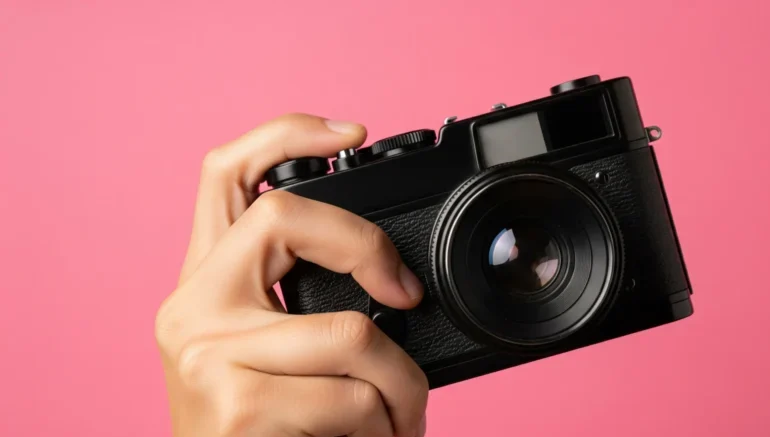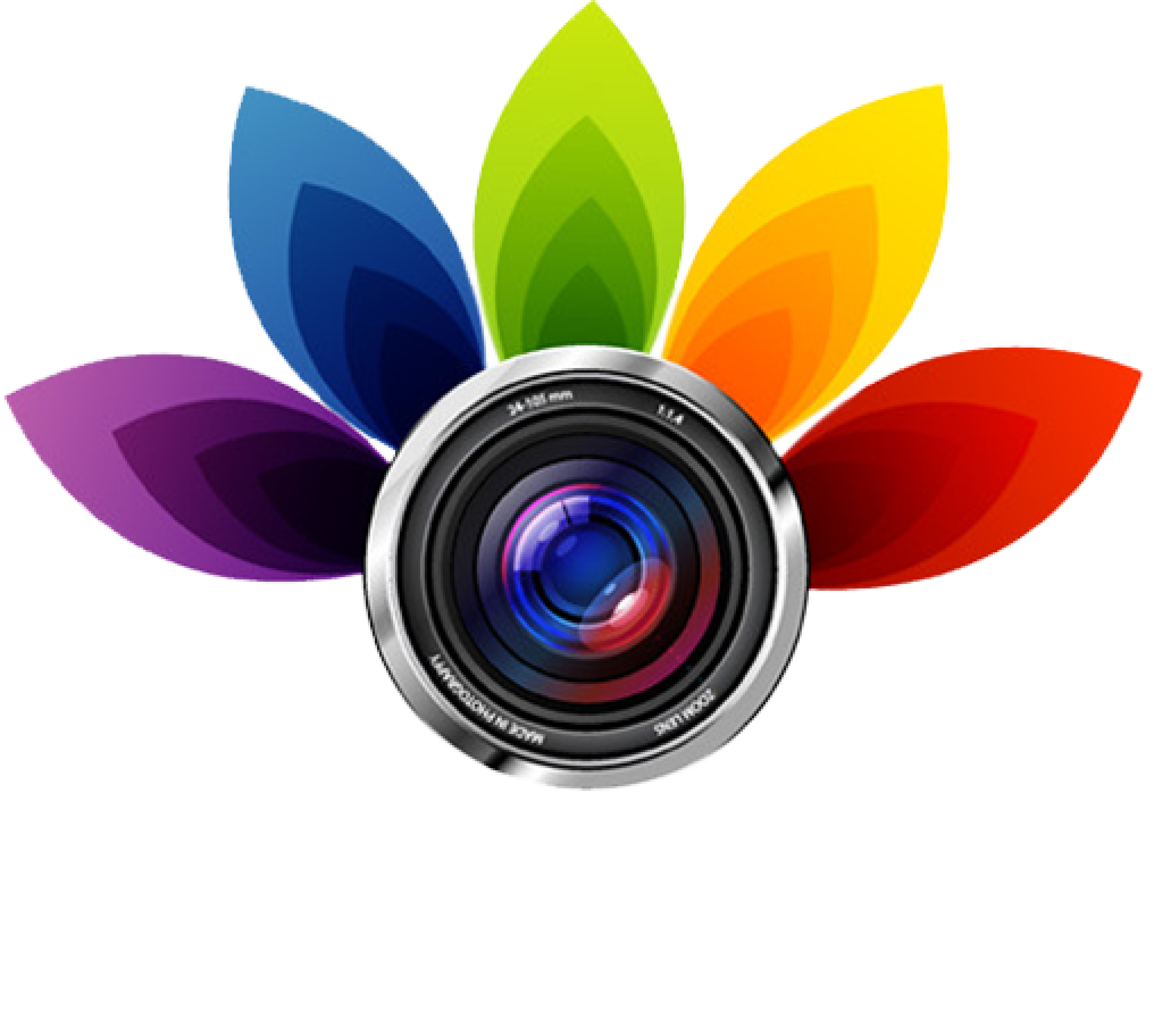
Headshot Photography Gear for Shooting Incredible Photos
Taking professional headshots requires the right gear, a headshot photography gear. A good camera, lens, and lighting setup will make a big difference in your final photos. A DSLR or mirrorless camera is a great choice because it lets you control things like shutter speed, ISO, and aperture. These settings affect how radiant or sharp your photo will be. A camera with a high-resolution sensor helps take more details, making the headshot look sharp and professional.
A tripod is another must-have. It keeps the camera steady, so your shots are very sharp and not blurry. Even small movements can make a headshot look slightly off, so a stable camera is always better. A remote shutter release also helps because it lets you take a photo without pressing the camera button. This avoids any small shakes that can happen when you touch the camera.
For long photography sessions, a battery grip is very useful. It holds extra batteries, so you do not have to stop shooting to change them. This saves time and keeps your workflow very smooth.
1. Choosing the Perfect Lens
 The lens you use affects how your headshot looks. A lens with a focal length between 50mm and 135mm is the best option. A 50mm lens gives a natural look, while an 85mm or 135mm lens adds a soft, flattering effect that smooths out facial features. These lenses help separate the person from the background, making them stand out very well.
The lens you use affects how your headshot looks. A lens with a focal length between 50mm and 135mm is the best option. A 50mm lens gives a natural look, while an 85mm or 135mm lens adds a soft, flattering effect that smooths out facial features. These lenses help separate the person from the background, making them stand out very well.
Some photographers like zoom lenses, such as a 70-200mm, because they offer more flexibility. You can adjust the zoom to get different framing without moving. However, zoom lenses can be heavier and cost more, so they are not always the first choice. Prime lenses, with a fixed focal length, are often better because they’re sharper and have wider apertures.
A lens with a wide aperture, like f/1.8 or f/2.8, is very helpful because it creates a blurry background effect, known as bokeh. This makes the person in the headshot stand out even more. A wider aperture also lets in more light, so you can shoot in lower light without increasing the ISO too much. This keeps your images clean and free from noise.
2. Lighting is Necessary for Headshots
 Lighting is one of the most important parts of taking great shots. Good lighting helps show the person’s features clearly and makes the image look more polished. There are different types of lighting, including natural light, studio lights, and LED panels. Many photographers use soft boxes or umbrellas to soften the light and reduce shadows on their face.
Lighting is one of the most important parts of taking great shots. Good lighting helps show the person’s features clearly and makes the image look more polished. There are different types of lighting, including natural light, studio lights, and LED panels. Many photographers use soft boxes or umbrellas to soften the light and reduce shadows on their face.
A ring light is a popular choice because it provides even lighting and reduces unwanted shadows. It also makes the skin look smoother and gives a nice glow to the subject’s face. Ring lights are very useful for professional and casual headshots.
Reflectors are an necessary part of headshot photography gear, helping to bounce light onto the face for a softer, more balanced look. Gold reflectors add warmth to the skin, silver reflectors intensify the light, and white reflectors provide a neutral effect. Selecting the right reflector can significantly improve the final image, improving both the subject’s appearance and the overall quality of the headshot.
For stronger lighting, speedlights and strobe lights are great options. They produce a powerful burst of light, which can be adjusted to match the environment. To position the lights correctly, a sturdy light stand is needed.
3. Adjusting Camera Settings
 The right camera settings will make sure your headshots look very professional. Using manual mode gives full control over brightness, sharpness, and background blur. A shutter speed of at least 1/125 is good for keeping the image sharp, especially if the person moves slightly. If you are using a tripod, you can lower the shutter speed a bit, but not too much, or the image may become blurry.
The right camera settings will make sure your headshots look very professional. Using manual mode gives full control over brightness, sharpness, and background blur. A shutter speed of at least 1/125 is good for keeping the image sharp, especially if the person moves slightly. If you are using a tripod, you can lower the shutter speed a bit, but not too much, or the image may become blurry.
Aperture settings depend on how much of the subject you want in focus. A wide aperture, such as f/2.8, gives a softer background, making the person stand out more. If you want more of the subject to be sharp, an aperture of f/4 or f/5.6 is better. It gives more focus on the details on their faces.
ISO should always be as low as possible to avoid noise. An ISO of 100 or 200 is best, but if the light is low, you may need to increase it slightly. Modern cameras handle higher ISO levels better, but it is still best to keep it low for very clear images. If you need to increase the ISO, try adjusting the aperture or shutter speed to keep the image quality good.
4. Perfecting ISO for Headshots
 ISO controls how sensitive your camera is to light. If you set it too high, your photo will make more noise, making it look grainy. If it is too low, your photo might be too dark. A low ISO of 100 or 200 is ideal for keeping the image clean. In low-light situations, you may need to increase the ISO but try to find a balance to avoid excessive noise.
ISO controls how sensitive your camera is to light. If you set it too high, your photo will make more noise, making it look grainy. If it is too low, your photo might be too dark. A low ISO of 100 or 200 is ideal for keeping the image clean. In low-light situations, you may need to increase the ISO but try to find a balance to avoid excessive noise.
If you are taking photos indoors with less light, you might need to increase the ISO slightly but try to keep it below 800. It is better to add more light to the scene instead of increasing ISO too much. Using artificial lighting like soft boxes or LED panels helps keep the ISO lower. Positioning the light source properly can also reduce shadows and create a more natural-looking image.
If you’re in low light and raise the ISO, use noise reduction in editing apps like Lightroom or Photoshop. Good lighting and the right ISO will keep your shot clear without overdoing it.
5. Aperture’s Impact on Depth of Field
 Aperture affects how much of the photo is in focus. A low f-stop number like f/1.8 or f/2.8 makes the background blurry, which is great for headshots. This effect makes the person stand out very well, especially in busy locations. A higher f-stop number, like f/8 or f/11, keeps more of the scene in focus, making it ideal for landscapes or group shots.
Aperture affects how much of the photo is in focus. A low f-stop number like f/1.8 or f/2.8 makes the background blurry, which is great for headshots. This effect makes the person stand out very well, especially in busy locations. A higher f-stop number, like f/8 or f/11, keeps more of the scene in focus, making it ideal for landscapes or group shots.
If you are shooting a group headshot or want more of the subject’s face to be sharp, an aperture of f/4 or f/5.6 is better. This keeps more of the subject in focus while still making the background slightly blurred. Always make sure the eyes are in focus since they are the most important part of a headshot.
When selecting an aperture, consider the subject’s positioning. If the person is angled or tilting their head, using a very shallow depth of field (like f/1.4 or f/1.8) might blur one eye. To avoid that, try using f/2.8 or f/4 for a good balance between background blur and keeping the whole face in focus. Testing different apertures during the shoot helps you find the right look for each person.
6. Backdrops and Props
 The background of a headshot is very important. A simple, clean background works best so the focus stays on the person. Solid colors like white, gray, or black are the most common because they give a professional look. Some photographers use textured backdrops to add more character, but it is best to keep it simple.
The background of a headshot is very important. A simple, clean background works best so the focus stays on the person. Solid colors like white, gray, or black are the most common because they give a professional look. Some photographers use textured backdrops to add more character, but it is best to keep it simple.
Outdoor headshots can look amazing, but it’s necessary to keep the background simple so it doesn’t distract from your subject. The main goal is to make the person stand out, not compete with the surroundings. Using a wide aperture helps blur the background and keeps the focus on the subject, while soft, natural lighting, especially during golden hour, improves the overall look. Using the right headshot photography gear ensures you consistently take flattering and professional-quality images.
Props can also be used, but they should be minimal and meaningful. If the person has a job that involves specific tools, adding them can make the photo feel more personal. However, too many props can take attention away from the subject, so it is better to keep it simple. Choosing props that complement the subject’s personality or profession can add depth without overwhelming the composition.
7. Polishing in post-processing
 After taking headshots, editing the photos makes them look even better. Software like Photoshop or Lightroom helps adjust brightness, contrast, and sharpness. Retouching can remove small blemishes or imperfections, but it should not be overdone. A natural look is always better.
After taking headshots, editing the photos makes them look even better. Software like Photoshop or Lightroom helps adjust brightness, contrast, and sharpness. Retouching can remove small blemishes or imperfections, but it should not be overdone. A natural look is always better.
White balance adjustments make sure that skin tones look accurate. If the image looks too warm or too cool, adjusting the color balance helps make it look more natural. Sharing the image can improve details but sharpening too much can make it look harsh.
Besides adjusting exposure and color, light skin retouching can improve a headshot without making it look artificial. Techniques like frequency separation in Photoshop help smooth skin tones while preserving texture, giving a polished and professional appearance. Brightening the eyes, whitening teeth, and softening shadows further improve the image. Using the right headshot photography gear ensures your photos are not only technically accurate but also visually striking and professional.
Conclusion
Taking professional headshots involves more than just pointing a camera. The right headshot photography gear, along with proper lighting and camera settings, plays a important role in achieving excellent results. A DSLR or mirrorless camera offers full control over settings, while prime lenses like 50mm or 85mm help create a beautiful background blur. Lighting is necessary, and tools such as soft boxes, reflectors, and ring lights can dramatically improve how the subject appears in the photo.
Adjusting camera settings like shutter speed, aperture, and ISO helps make sure the image is radiant and sharp. A low ISO keeps noise away, while a wide aperture makes the background soft and smooth. Simple backdrops and minimal props help keep the focus on the subject.
Editing the photo after shooting helps fine-tune colors, brightness, and sharpness. With the right approach, headshot photography can produce very professional and high-quality results.
Read Next: Perfect Portrait Photography Camera Secrets





